Your basket is currently empty!
Description
Lyretail Mollies (Poecilia latipinna or Poecilia sphenops, depending on the specific variety) are popular and beautiful freshwater fish known for their graceful, elongated fin shapes. The “lyretail” refers to their distinctive tail fin, which is elongated and pointed at the tips, creating a “lyre” or harp-like shape. These fish are available in a wide range of colors and patterns, including black, orange, silver, dalmatian, and more. Lyretail Mollies are ideal for peaceful community tanks and are easy to care for, making them a favorite among both beginners and seasoned aquarists.
Appearance
The lyretail is distinguished by its extended, pointed dorsal fin and a striking, flowing tail. Lyretail Mollies can reach up to 4 to 5 inches in length, with males generally displaying longer fins and more vivid colors than females. The extended caudal fin of the lyretail variety curves gently outward, giving the fish a flowing, elegant appearance as it swims. Their bodies are typically slim and streamlined, with coloration and pattern varying widely depending on the specific morph, which may include shades of black, orange, white, and spotted or marbled patterns.
Habitat and Tank Requirements
Lyretail Mollies are native to slow-moving rivers and coastal areas with brackish water in Central and South America. They are highly adaptable and can tolerate a range of water conditions, from freshwater to brackish environments. A tank of at least 20 to 30 gallons is recommended, especially if keeping a small group, as Lyretail Mollies are active swimmers and enjoy ample space.
Tank Setup
Substrate: A sandy or fine gravel substrate works well for Lyretail Mollies, as they will graze on it for food particles.
Décor: Provide plants, rocks, and driftwood to mimic their natural environment and create hiding spots. Live plants are especially beneficial, as they offer cover and contribute to water quality.
Water Quality: Lyretail Mollies are sensitive to poor water conditions, so regular water changes and a good filtration system are essential.
Temperature: They thrive in temperatures between 72°F and 82°F (22°C to 28°C).
pH: Lyretail Mollies prefer slightly alkaline water with a pH range of 7.5 to 8.5. Adding a small amount of aquarium salt to mimic a brackish environment can be beneficial but isn’t necessary for all setups.
Diet and Feeding
Lyretail Mollies are omnivorous with a particular fondness for plant-based foods. In the wild, they consume algae, plant material, and small invertebrates. In an aquarium, they do well on a varied diet that includes high-quality flake food, algae wafers, and blanched vegetables like spinach, cucumber, and zucchini. They also enjoy protein-rich options like bloodworms, brine shrimp, and daphnia. Feeding a combination of plant and protein sources helps maintain their health, vibrant coloration, and promotes natural foraging behavior.
Temperament and Compatibility
Lyretail Mollies are peaceful and social, making them an excellent choice for community tanks. They do best in groups of at least 4 to 6 to encourage social interaction and reduce stress. Compatible tank mates include other peaceful species such as guppies, platies, swordtails, tetras, and smaller corydoras catfish. Males can sometimes be mildly territorial, so ensure enough space and hiding spots in the tank, especially when keeping multiple males.
Lifespan and Care
With proper care, Lyretail Mollies can live up to 5 years in captivity. They are hardy fish but can be susceptible to common freshwater fish ailments if kept in suboptimal conditions. Maintaining clean water, stable water parameters, and a varied diet will help them thrive and reach their full lifespan.
Special Considerations
Brackish Water: While they can be kept in pure freshwater, a small addition of aquarium salt (if compatible with other tank mates) can enhance their health and coloration. They are adaptable to a wide salinity range and can even live in fully brackish setups.
Breeding: Lyretail Mollies are livebearers, meaning they give birth to free-swimming fry. They breed readily in captivity, and females can store sperm, allowing for multiple births from a single mating. If breeding is desired, providing plenty of plants or breeding boxes can help fry survive, as adult fish may prey on young fry.
Fin Care: The lyretail fin structure, while beautiful, can be prone to damage. Avoid placing Lyretail Mollies with fin-nipping species, and ensure there are no sharp objects in the tank that could harm their delicate fins.
Final Thoughts
Lyretail Mollies are graceful and colorful fish that bring vibrancy and activity to aquariums. Their adaptability, peaceful nature, and ease of care make them an ideal choice for aquarists of all experience levels. With proper care, they can thrive in various tank setups, from freshwater to lightly brackish, and will provide a lively and elegant addition to any aquatic environment. Their social nature, combined with their unique lyretail shape, makes them a standout in community tanks, where they can be enjoyed for their beauty and personality.
Lyretail Gold-Dust Molly
Lyretail Mollies (Poecilia latipinna or Poecilia sphenops, depending on the specific variety) are popular and beautiful freshwater fish known for their graceful, elongated fin shapes. The “lyretail” refers to their distinctive tail fin, which is elongated and pointed at the tips, creating a “lyre” or harp-like shape. These fish are available in a wide range…

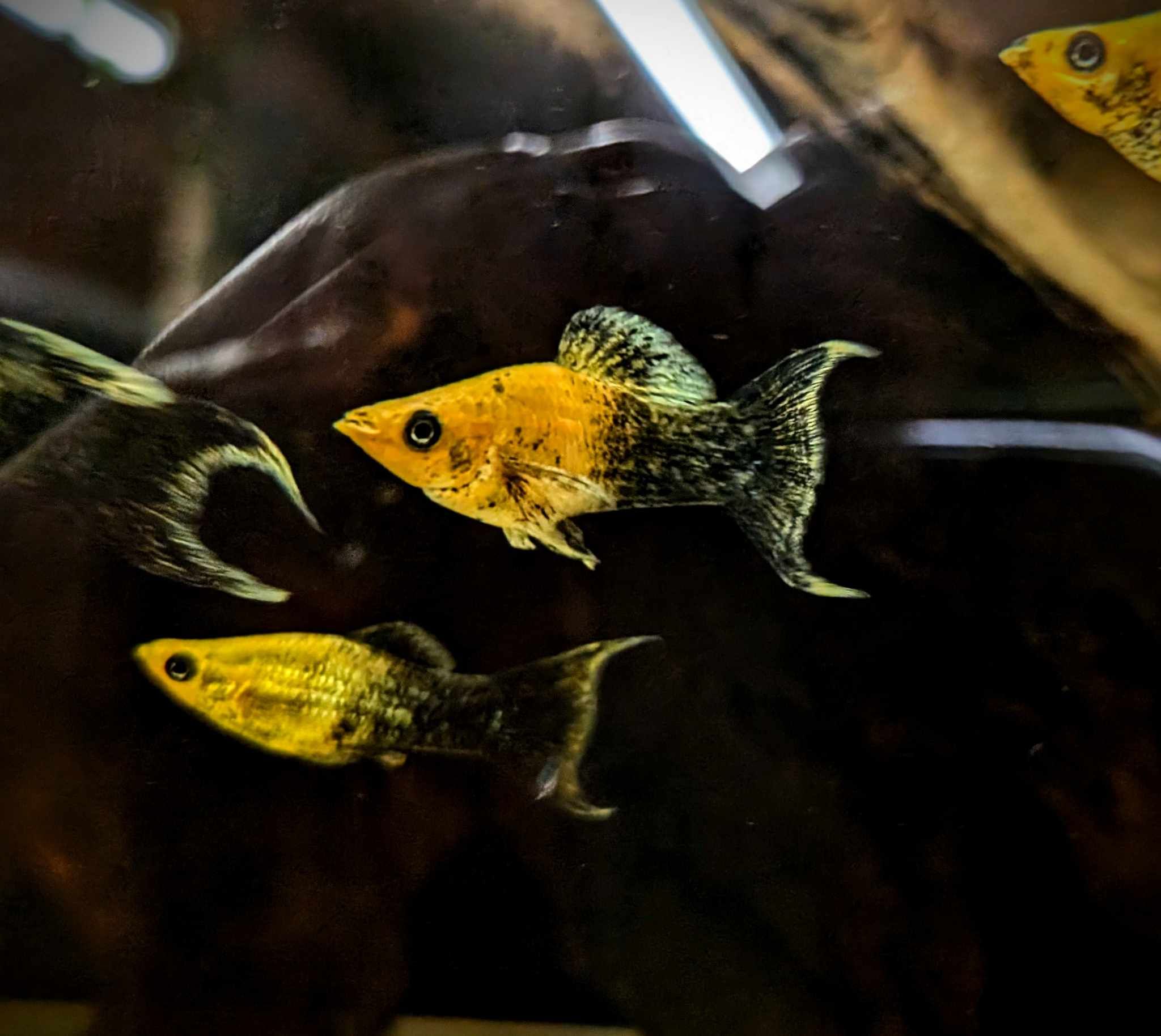


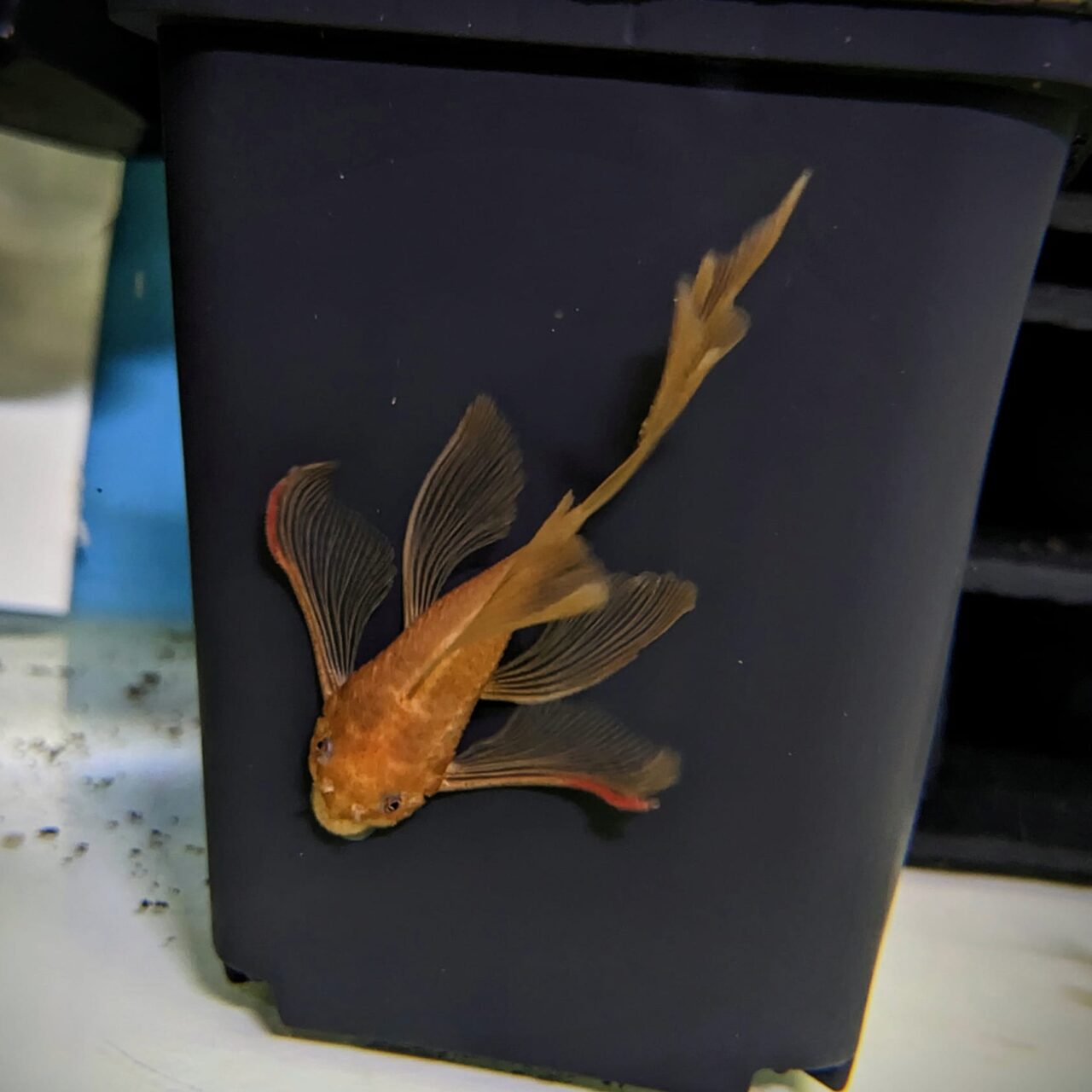
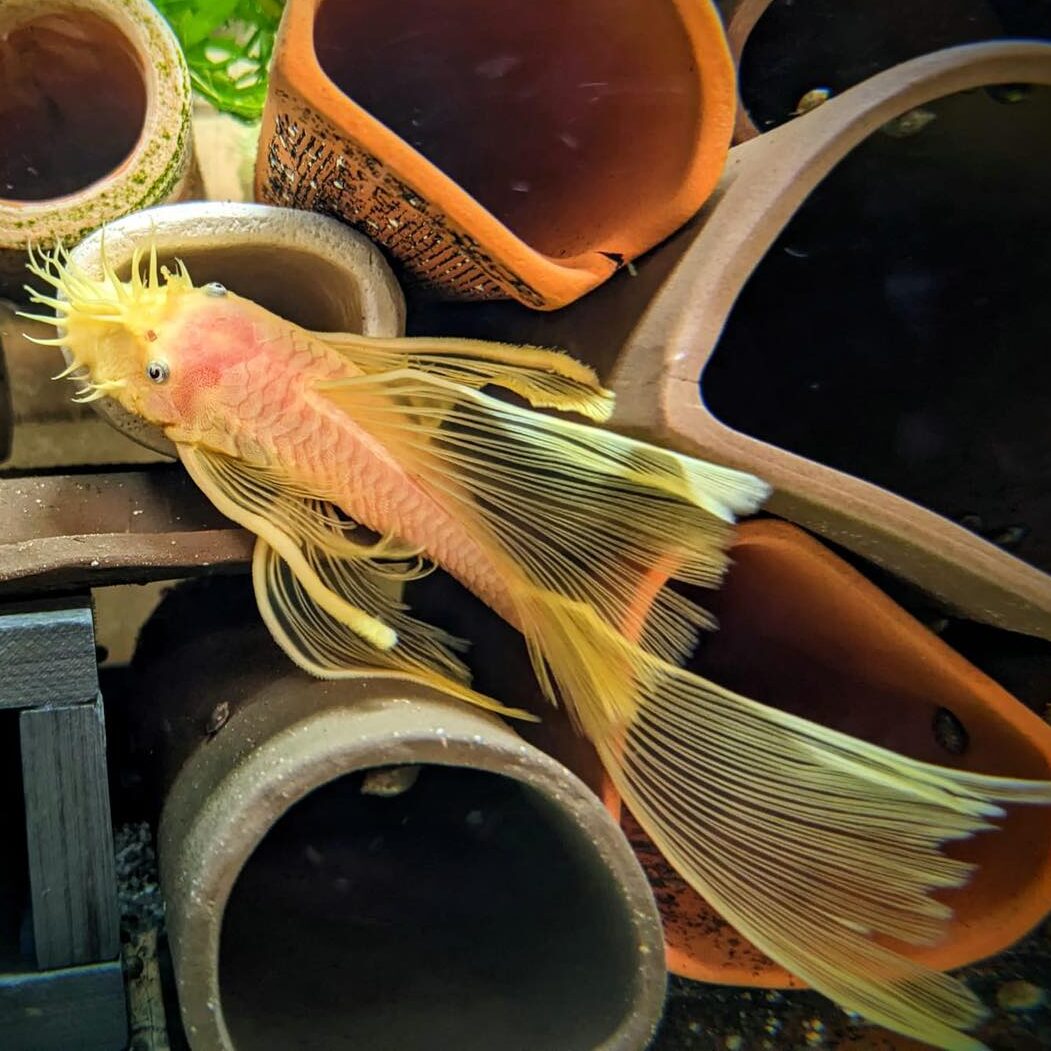
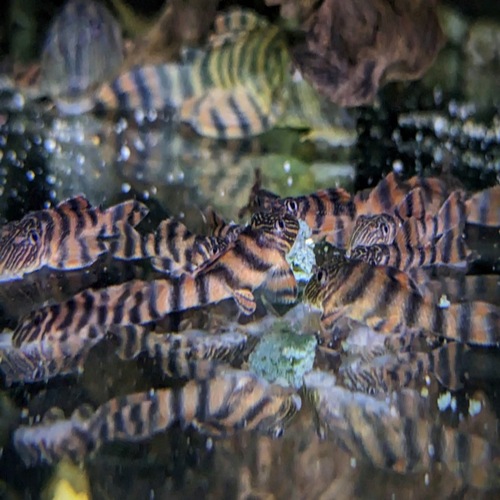
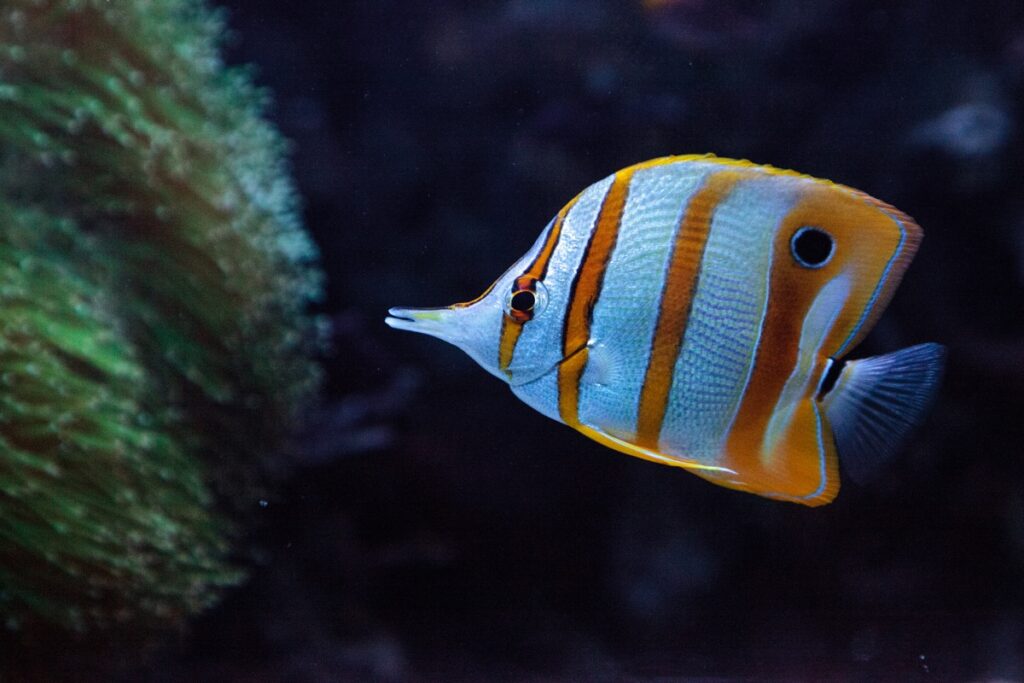


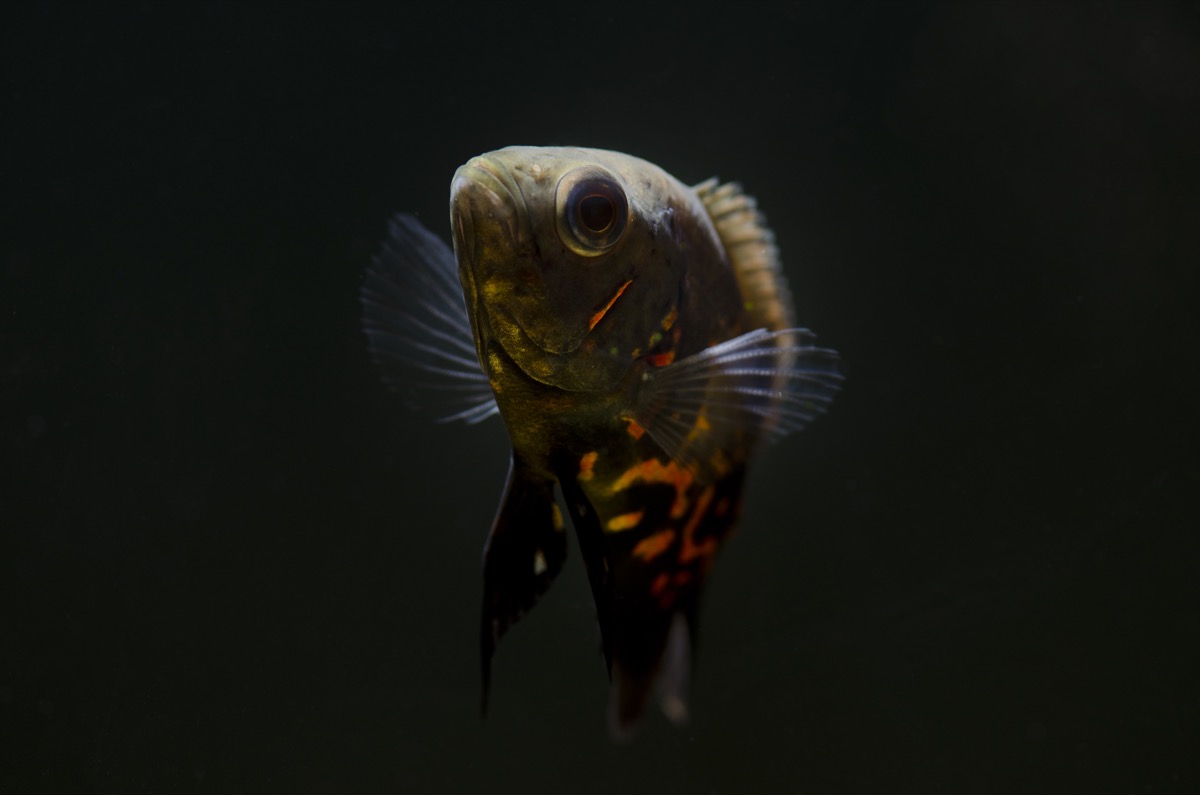
Reviews
There are no reviews yet.